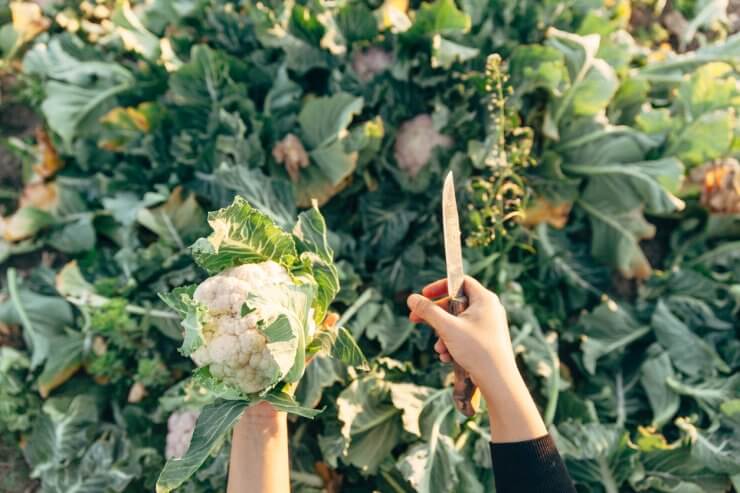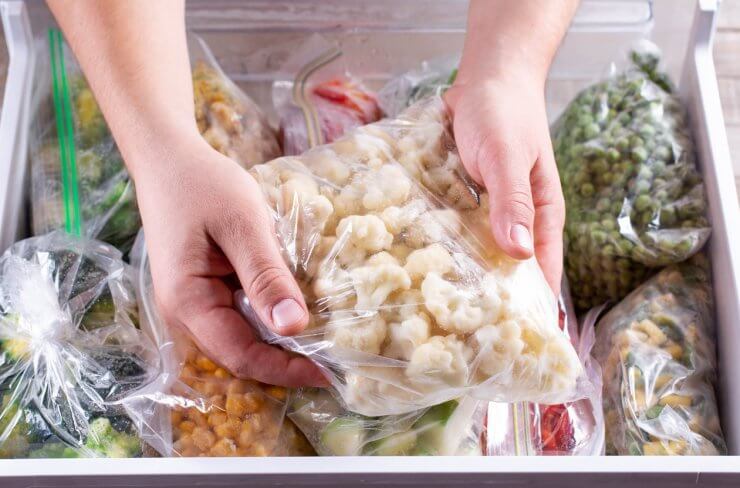
Blanching cauliflower
Blanching is an important part of the cauliflower-growing process. This procedure protects white cauliflower heads from too much sun, keeping them nice and white for your table.
Blanching is not required for colored cauliflower, and some modern varieties are self-blanching, with leaves that curl up to protect the head. Still, even self-blanching varieties may need some help.
Blanch your cauliflower when the heads are about 2 inches wide, or the size of a golf ball. Tie the outer leaves together above the head—not too tightly, as the head needs air to circulate—using twine, elastic bands, tape, or clothespins.
Peek in and keep an eye on the developing head. Plants are usually ready to harvest seven to 12 days after blanching, but follow maturation instructions from your seed packet or starter.
Harvesting

Harvesting cauliflower
Plants are generally ready to harvest in about 50 to 100 days. Heads should be compact, white (if growing a white variety), and firm, ideally 6 to 8 inches across.
To harvest, cut the heads off the plant with a large knife, leaving some of the leaves around the head to keep it protected. Cut the stalk just below the head, leaving a stem of 1 to 2 inches long.
If your heads seem too small, but have already started to open up, they won’t get larger, so harvest them immediately. If the head has a coarse appearance, it’s past maturity and should be discarded.
Storage

Storing cauliflower in the refrigerator
Store heads in a plastic bag in the refrigerator, where they should last about a week. To store them longer, freeze or pickle the heads. To freeze, cut into 1-inch pieces. Blanch for three minutes in lightly salted water, cool in an ice bath for three minutes, drain, package, seal, and freeze.
Have you had to blanch your cauliflower crop? Tell us how that worked out for your cauliflower heads.


 Previous
Previous

